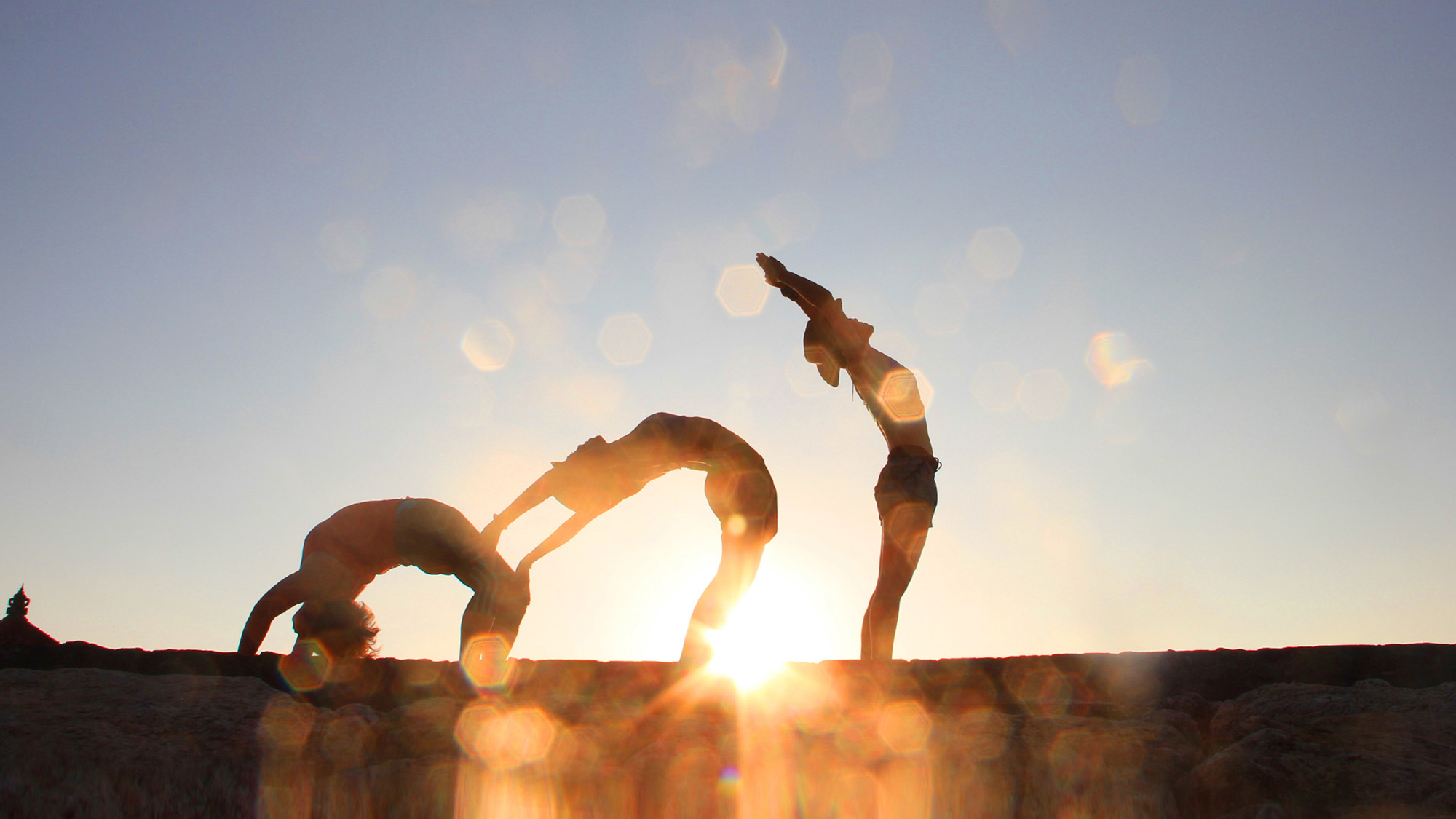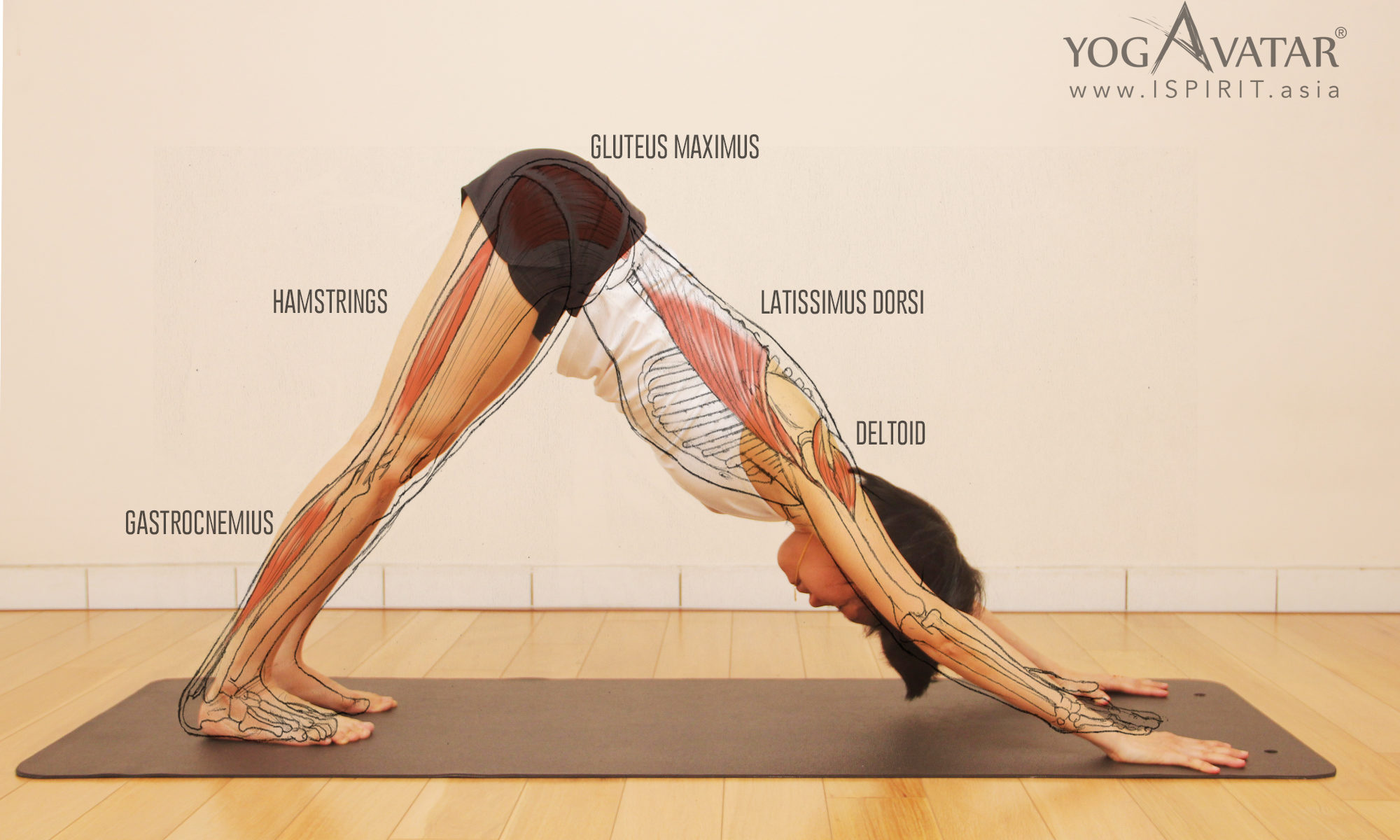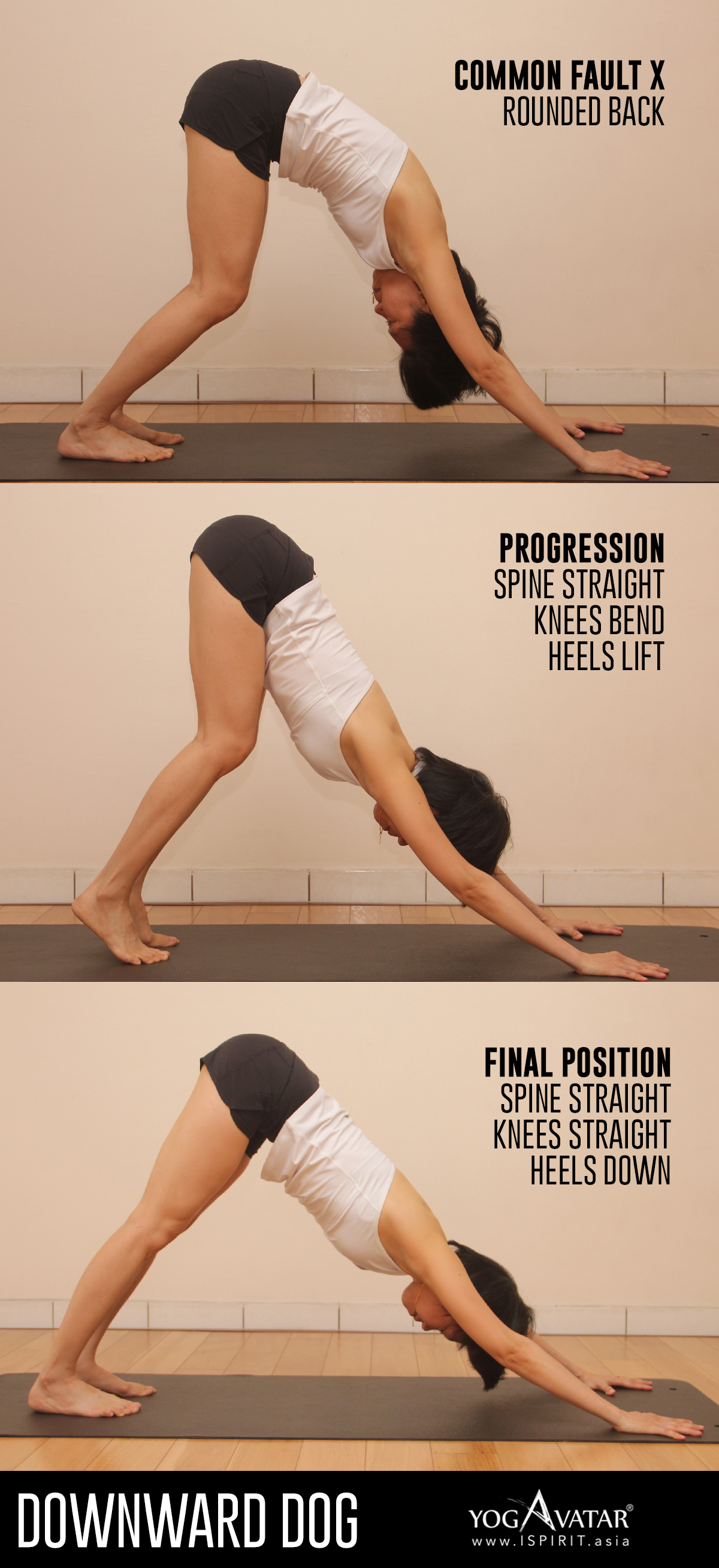
Why I couldn’t keep my knees straight during Adho Mukha Svanasana (Downward Facing Dog) but I am able to firmly press my heels down on the floor.
Adho Mukha Svanasana also commonly known as Downward Dog is the most basic and widely-used yoga pose. As both a stretching and strengthening asana, downward dog provides incredible balance for mind and body. It also targets your upper and lower body at the same time, so you’ll need to work on your hands, arms, shoulders, back, calves, hamstrings and even the arches of your feet. This is a very common situation that people couldn’t straighten the legs in this pose even though they may have practiced Adho Mukha Svanasana for sometime. To answer to your question, there are two possibilities:
If your lower back is rounded with the knees bend and heels firmly pressed on floor.
This is a sign of tight or stiff hamstring muscles but may not necessary have flexible calf muscles. As your lower back is rounded, the back of the legs have more length and may allow the heels to be pressed down firmly. For this case, you will need to keep the spine elongating and straight first with the knees bend and heels raise. Then slowly progress to press the heels down without rounding the back. Below are some basic yoga poses and stretching techniques that can help to improve your hamstring and calves flexibility.
If you are able to keep the spine straight with the knees bend and the heels firmly pressed on floor.
This is also a sign of tight or stiff hamstring muscles and maybe flexible in calf muscles. In Adho Mukha Svanasana if the knees are bend but able to keep the spine straight is the main focus. Hence, this is the right alignment to start off with. To improve your hamstring flexibility, you can refer to the below basic yoga poses and stretching practice.
Prioritising the heels down last instead of compromising the spine length.
When the muscles in the back of the legs are ready to lengthen, they will lengthen. Be patient and embrace your point in the journey.
The Basic understanding Anatomy of Downward Dog Yoga Pose | Adho Mukha Svanasana
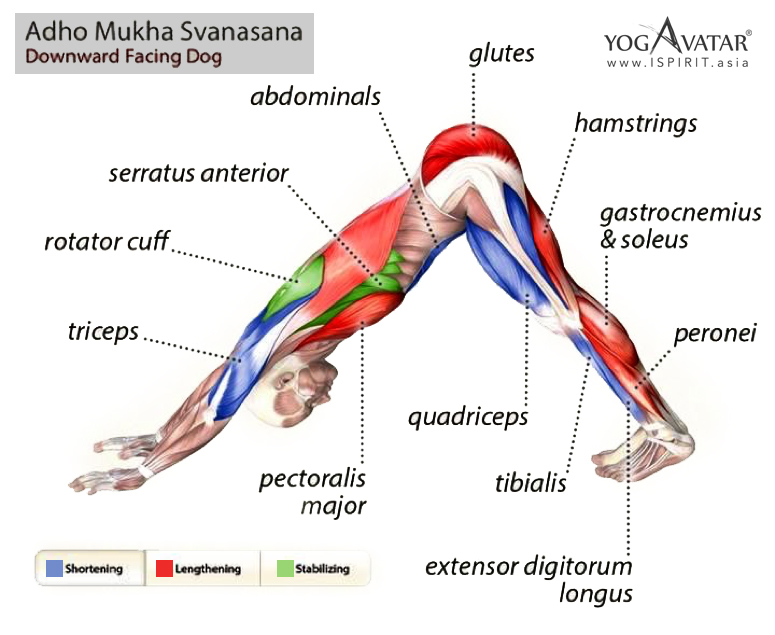
Anatomy of Hamstrings Muscles
The hamstring muscle group comprises of 3 muscles namely the semimembranosus, semitendinosus and biceps femoris muscles. The hamstring flex the knee joint, adduct the leg, and extend the thigh to the backside of the body. They are used in walking and running.
Tight hamstrings can cause the pelvis and the hips to tilt backwards leading to flattening of the lower back and may result the knees to bend during Adho Mukha Svanasana. Hamstring muscles are said to be tight when a person is not able to raise the leg off the floor by more than 80 degrees when lying flat on the back.
Anatomy of Quadriceps Muscles
The quadriceps muscles group comprises of 4 muscles rectus femoris, vastus medialis, vastus lateralis and vastus intermedius. They contract together to help flex (or lift up) the hip and extend (or straighten) the knee. They are crucial in walking, running, jumping and squatting. Because the rectus femoris attaches to the ilium, it is also a flexor of the hip.
The quadriceps often become weak after injury is sustained on the lower leg or the thigh muscles are underuse (prolong sitting). Knee buckling is the most common presentation of quadriceps weakness.
Anatomy of Gastrocnemius and Soleus Muscles
The gastrocnemius is located with the soleus. Its other end forms a common tendon with the soleus muscle; this tendon is known as the Achilles tendon and inserts onto the posterior surface of the heel bone. The gastrocnemius muscle is crucial for running, jumping and other fast movement of leg and to a lesser degree in walking and standing. The soleus muscle is crucial for standing and walking.
These muscles acting via the Achilles tendon, cause planter flexion of the foot at the ankle and flexion at the knee. This action brings the sole of the foot closer to the back of the leg. As these 2 muscles comes together to form the Achilles tendon at the back of our ankle. Therefore, if these muscles are tight then the Achilles is tight. Resulting the knees to flex and heels lifted during Adho Mukha Svanasana.
3 Basic Yoga Poses for Daily Practice to Loosen-up Tight or Stiff Hamstring Muscles
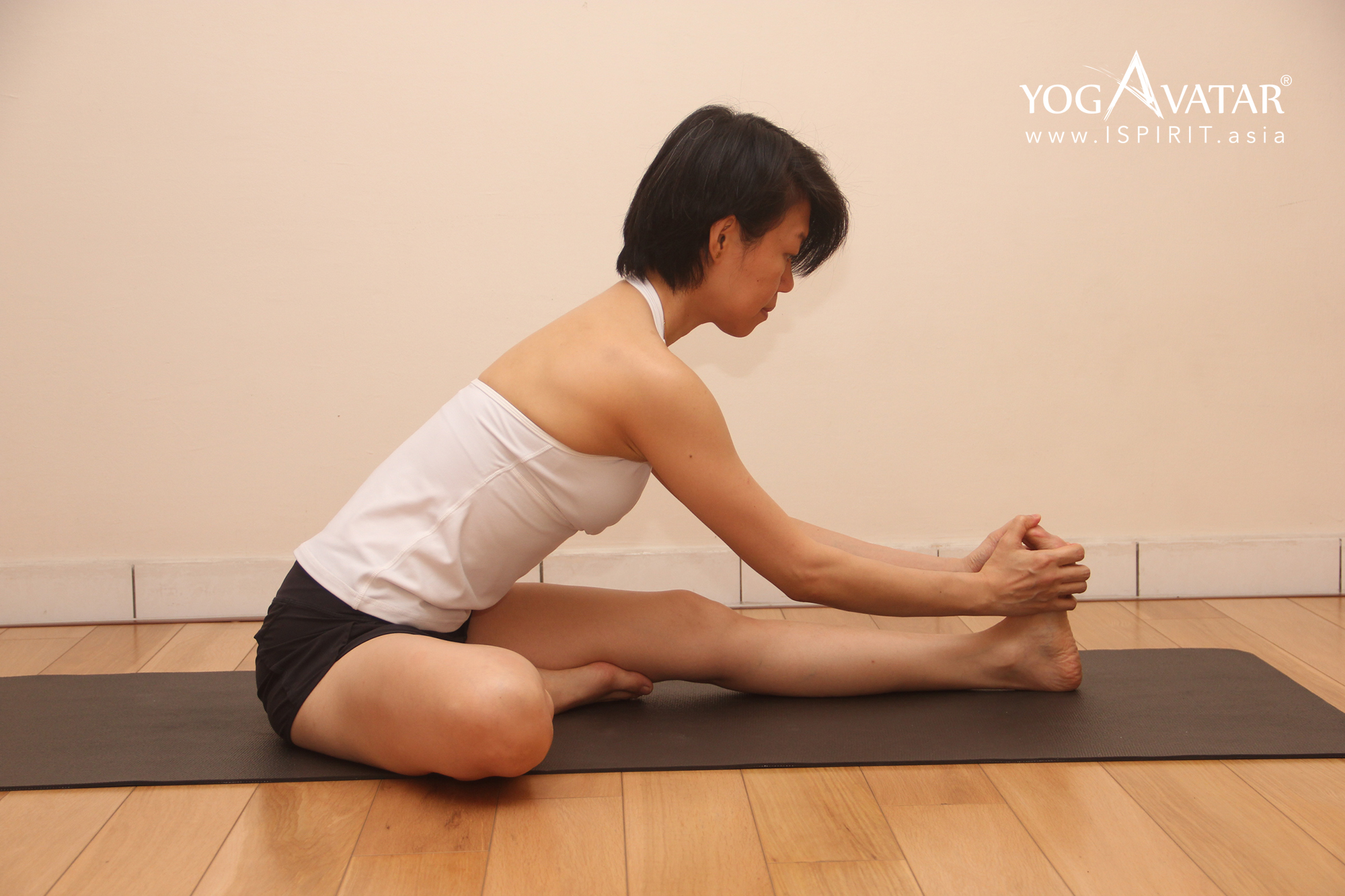
1) Janu Sirsasana (Head-To-Knee Forward Bend)
- Sit in Dandasana and one leg extended out in front, keep the other leg flexed.
- Rotate the extended leg inwards and lean forwards at the hips.
- You can feel a stretch below the thigh.
- Hold this stretch for 30 seconds.
- Repeat the stretch for a minimum of 3 times and switch sides
- This stretch can also be done with the foot rotated outwards.
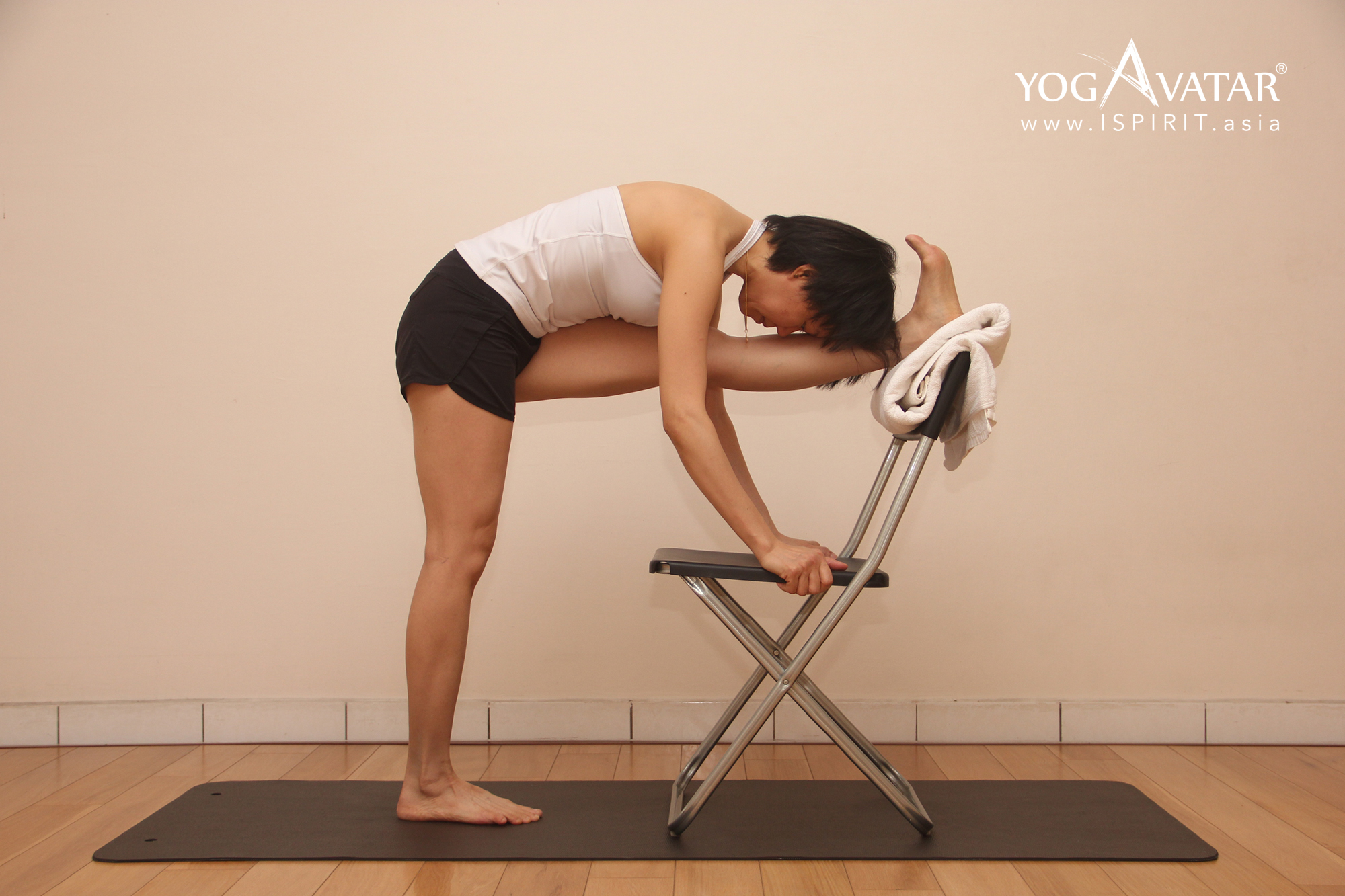
2) Utthita Hasta Padangusthasana (Supported Standing Big Toe Pose)
- Stand straight. Lift one leg and place on a chair at hip level or slightly lower. Ensure standing leg knee and toes pointing forward.
- Keep your hands on the flexed leg thigh in order to maintain your balance. You can feel a stretch.
- If you do not feel a stretch, tilt your pelvis forwards or lean forward.
- Hold the stretch for 30 seconds.
- Repeat the stretch for a minimum of 3 times and switch sides.
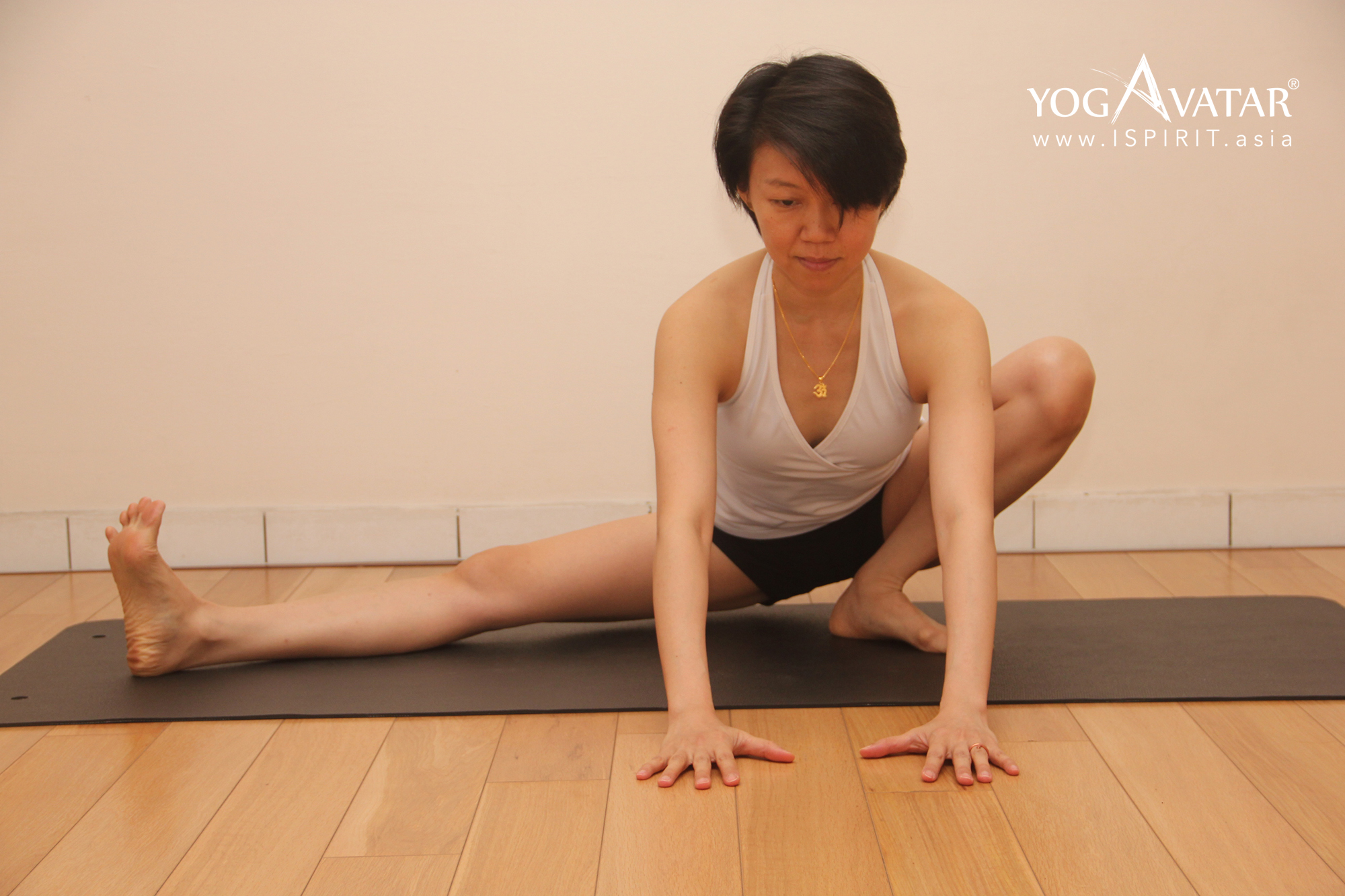
3) Skandasana (Side Lunge Pose)
As there are 3 muscles, besides forward bending to stretch your hamstrings, stretching the inner upper thigh is great to receive the optimum stretch. Skandasana is a great one for the inner upper thigh stretch.
- Move into a comfortable squat. Sitting on a block may help if the heels are not able to stay grounded.
- Flex trunk slightly forward towards the floor and place hands on floor as support.
- Straighten one leg out to the side. Hip is external rotated. Keep straight leg knee and toes facing upwards.
- You can feel a stretch.
- If you do not feel a stretch, lean the trunk more forward with the arms reaching far out as support.
- Hold the stretch for 30 seconds.
- To release reverse the order of movement.
- Repeat the stretch for a minimum of 3 times and switch sides
Technique for Stretching Hamstring Muscle
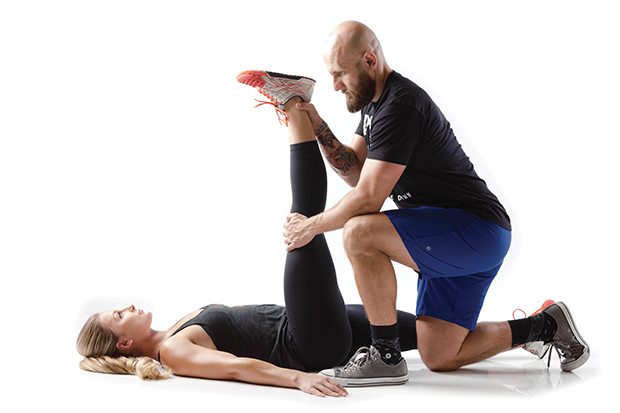
Proprioceptive Neuromuscular Facilitation (PNF) for the a more advanced form of flexibility training that involves both stretch and a contraction of the muscle group being targeted.
These are a set of stretching techniques and one of the types is known as CRAC stretching which means Contract, Relax, Agonist, Contract. This stretching is done as follows:
- First a gentle warm up is needed. Lie on your back and push a straight leg against light resistance for about 20 times.
- Then get a partner to gently lift one leg as far as it would go.
- Contract the leg by pushing against resistance while keeping the leg straight.
- The resistance should be such that the leg cannot move.
- Hold this position for 30 seconds and then relax.
- Repeat the stretch for a minimum of 3 times and switch sides
Massage For Tight of Stiff Hamstring Muscles
Other than stretching exercises, massage also helps with tight hamstrings by stretching the muscles transversely or sideways; and this cannot be done with stretching exercises. Massage also helps by increasing the blood circulation and helps with relaxing the muscles, thus making them more amenable to stretching. If the problem persists with tight hamstrings, particularly if it is one sided, then you may be suffering from piriformis syndrome or restricted nerves in the back.
Yoga Poses to Stretch Calf Muscles
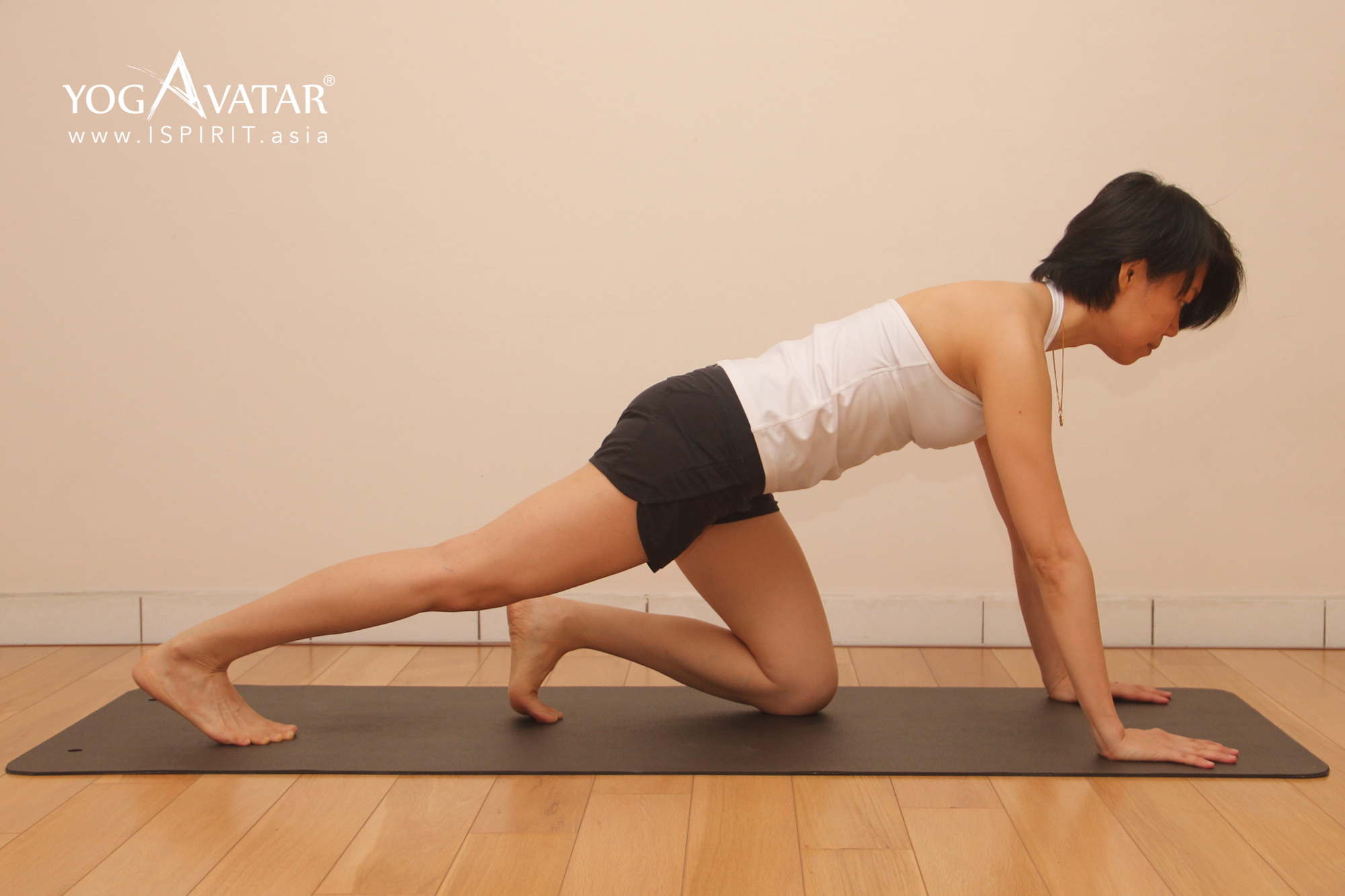
Bramanasana (Table Top) Variation with Calf Stretch
- Begin in a table top position. Keep shoulders stacked above your wrists and hips stacked above knees. Your knees should be 90-degree angles.
- Lift your right leg up and strengthen it out being you. Flex your right foot so that the ball of your foot comes to the ground.
- Gently press the ball of your right foot and shift your hips back to stretch the calf muscles.
- You can feel the stretch
- Hold the stretch for 30 seconds.
- Shift your weight forward again to bring your shoulders back above your wrists and to release the calf muscles stretch.
- Repeat the stretch for a minimum of 3 times and switch sides
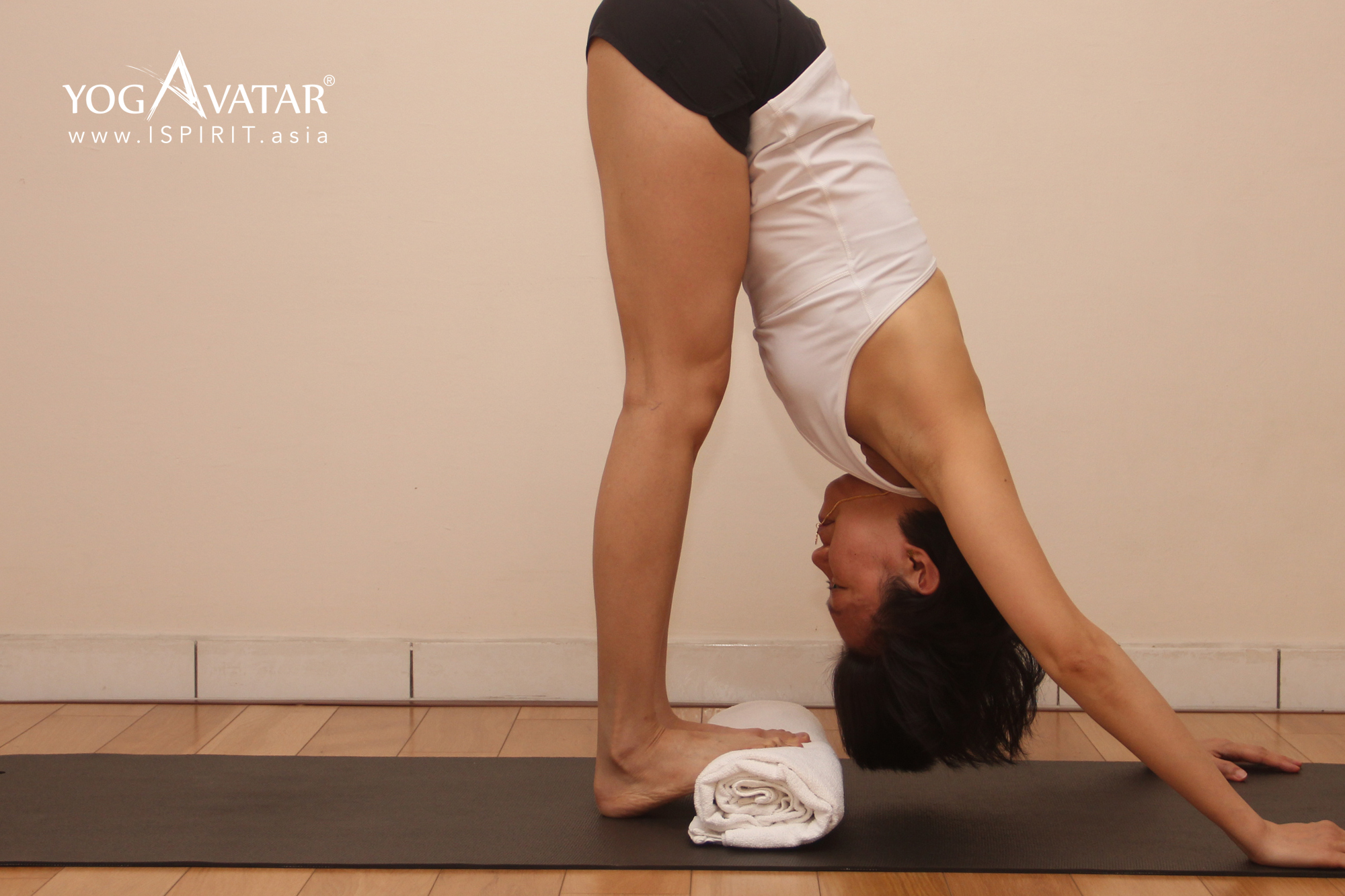
2) Padahastasana (Standing Forward Fold) with Rolled Towel
- Begin in standing. Step the balls of your feet onto the rolled-up towel, keeping your heels on the floor.
- Bend the knees slightly, lower your upper body and reach your hands towards the ground to bring your body into a standing forward fold position.
- You can shift the body weight towards your toes to deepen the calf muscles stretch.
- Hold the stretch for 30 seconds.
- Bend your knees more and slowly roll up to standing vertebrae at a time.
- Repeat the stretch for a minimum of 3 times.
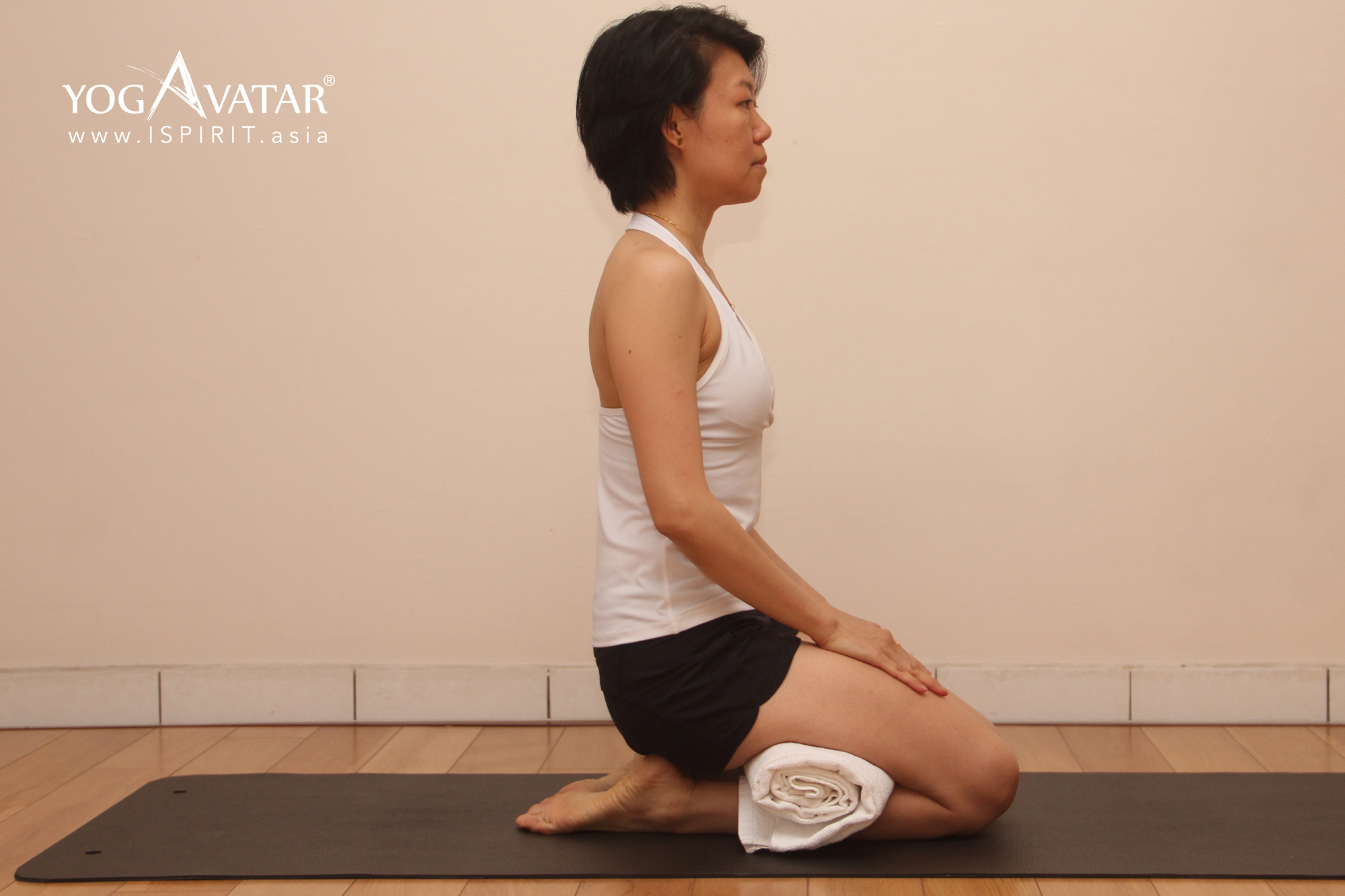
3) Varjrasana (Thunderbold Pose) with Rolled Towel
- Bring your body into a table top position with your legs all the way together.
- Place the rolled-up towel behind your knees
- Walk your hands back towards you and sit your hips back towards your heels.
- Lift your chest and place your hands on your thighs so that the weight of your body is pressing the towel into your calf muscles.
- Hold the stretch for 30 seconds.
- To release reverse the order of movement.
- Repeat the stretch for a minimum of 3 times.
Want to learn more about yoga technique? Come and join our Workshop and Training Click here to find out more about upcoming Yoga Workshop events
